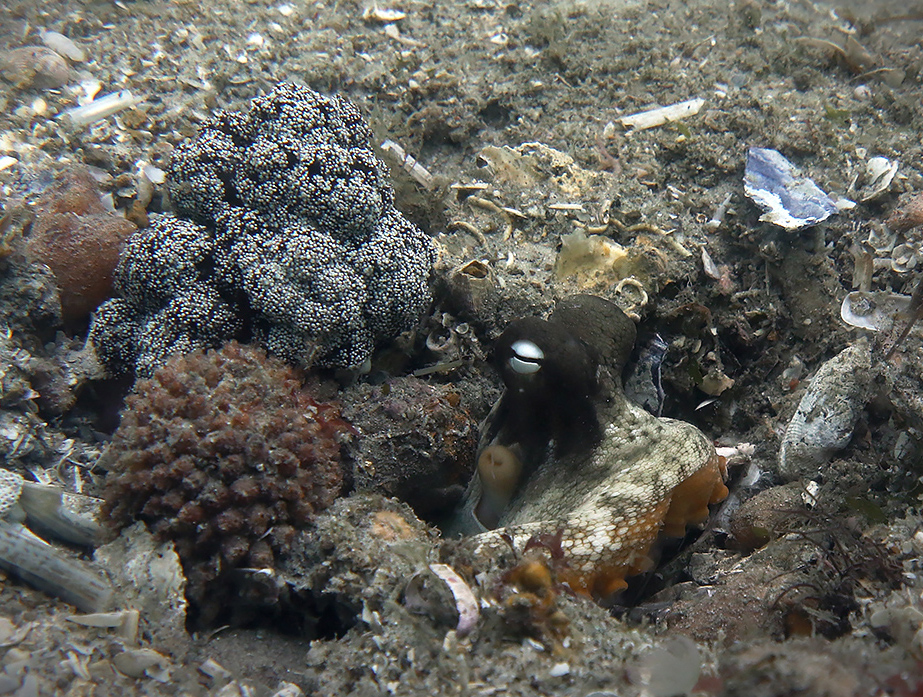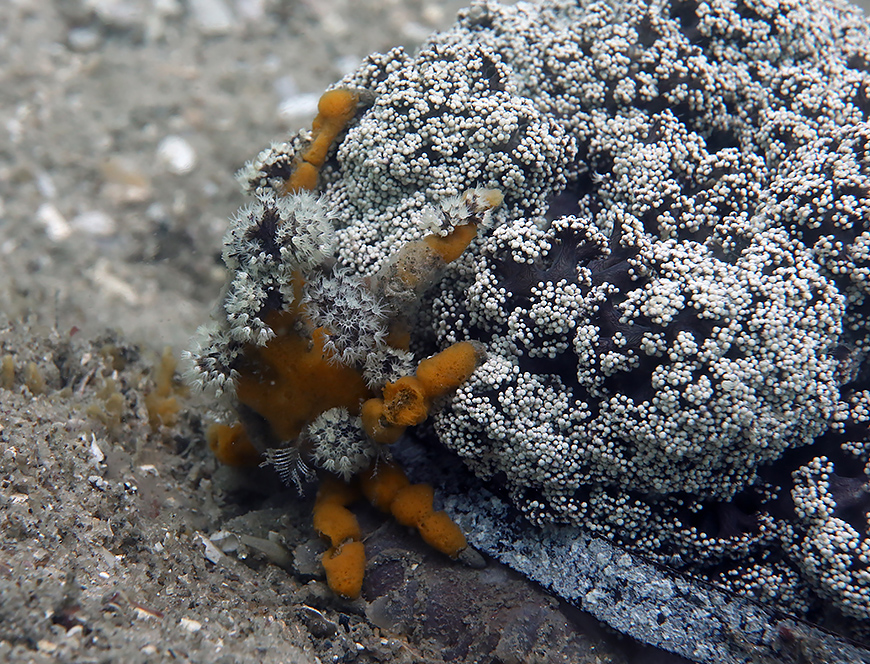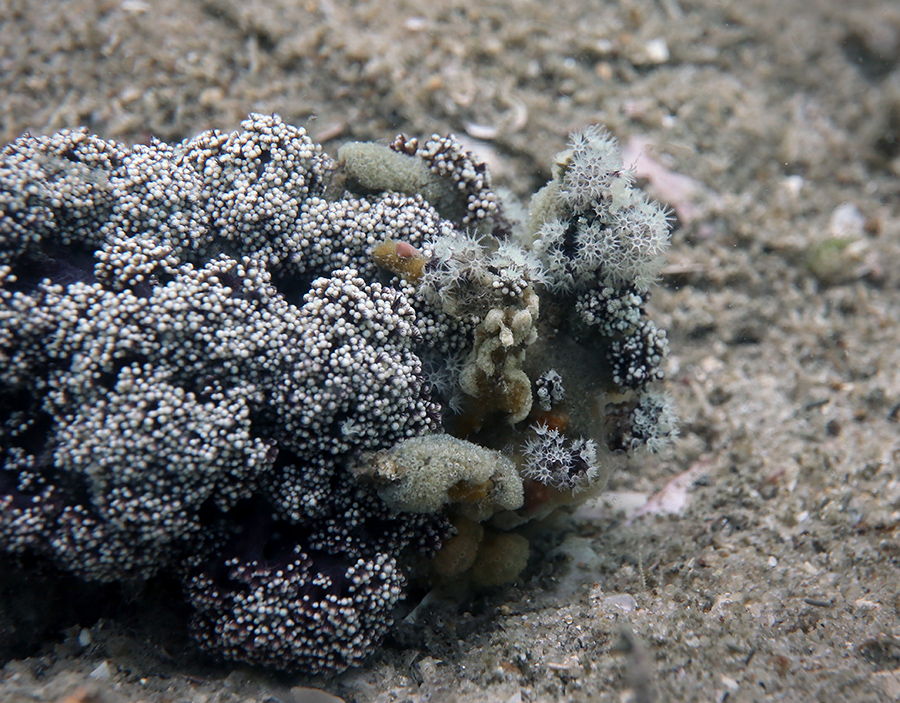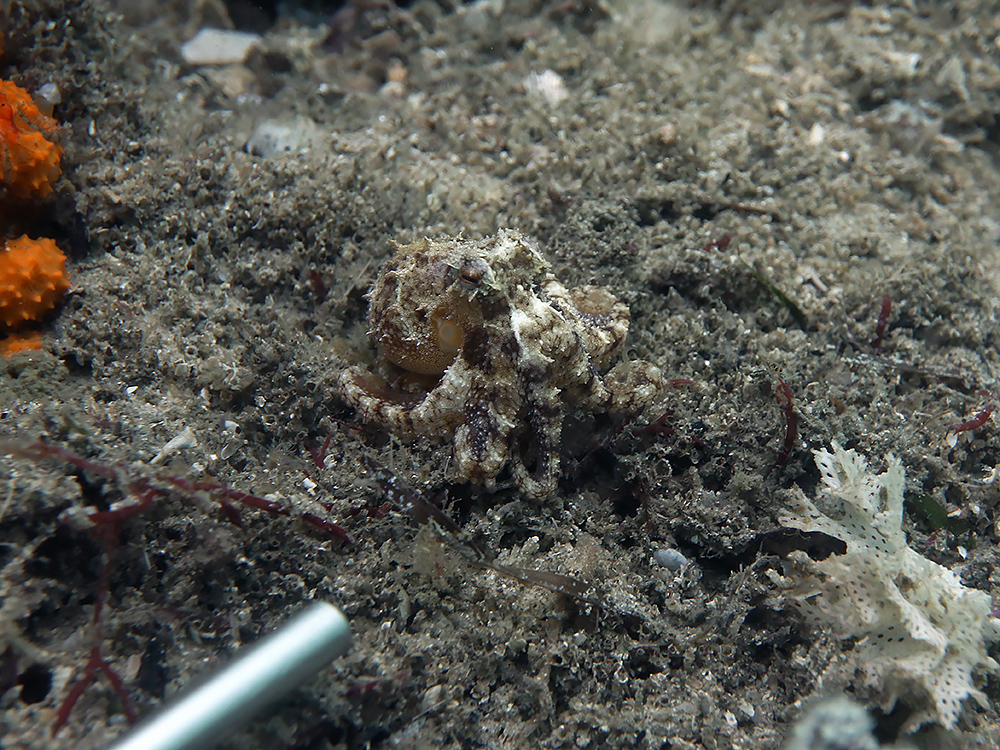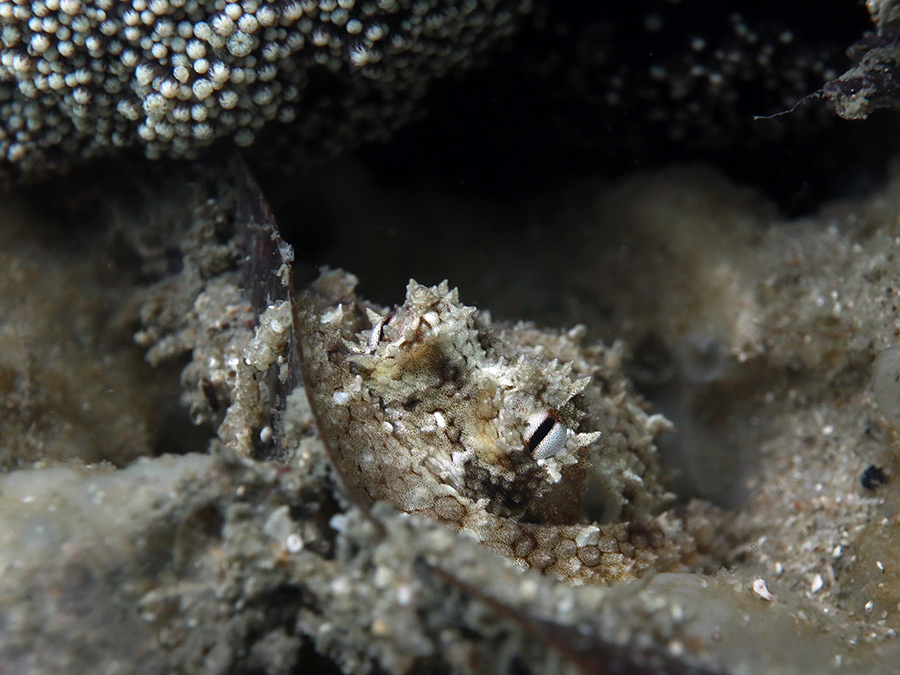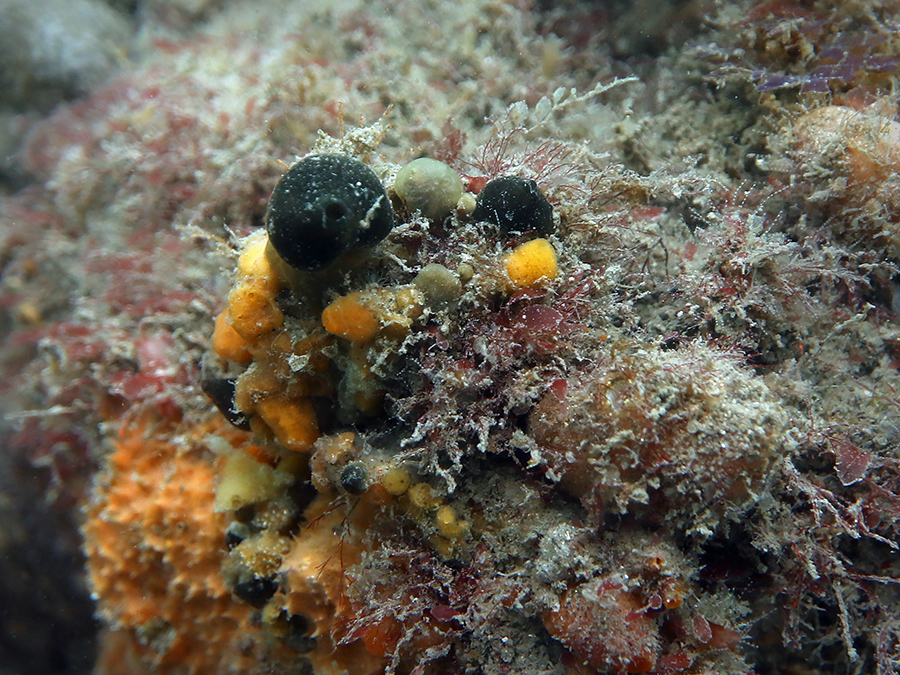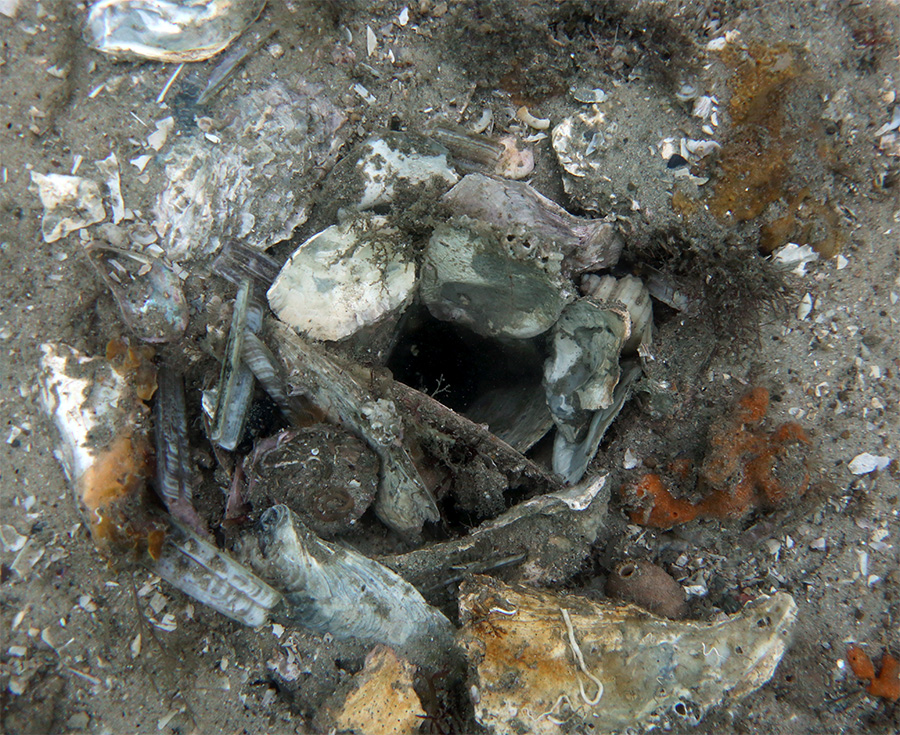Day 1
Last week I spent three days diving at the “Pipeline” site, in Nelson Bay, north of Sydney. This site was central to the book Metazoa – it is the site of the one-armed shrimp, the rise of soft coral, the kingfish, the inquisitive crab. It was beaten up badly by storms and floods in 2020 and 2021. I’ve gone back occasionally since then, watching for its recovery. On this trip, the site looked much better – still far from its best, but very good once again.
A quiet but significant contributor to the site’s rejuvenation is seen at the left of the photo at the top. This is a soft coral (Dendronephthya australis). A couple of expanses, meadows, of this coral used to be one of the glories of the site, and completely disappeared during the bad years. (Meryl Larkin has studied the decline and possible approaches to regeneration – she and her collaborators have a recent paper out, here.) On my trip last week, colonies of this coral were abundant, I was not counting, but must have seen at least a hundred, of all sizes, across the three days.
One of the things that made these corals important during the site’s heyday was the shelter and resources they provided for other animals. In particular, the Pipeline is a great site for a decorator crab, Hyastenus elatus (although who knows if they are all this species, given what they do?). These crabs encourage sponges, hydroids, and the like to grow on them, becoming little walking gardens. The additions protect the crab from predators, including octopuses. Seeing a decorator crab clothed in puffs of soft coral was always a particular pleasure, back in the day, and I saw at least four of them on this dive (without looking especially hard). The photos can make the garden look like an infection, but this, again, is exactly how the crab wants things.
I don’t have a good photo of large colonies of the coral, because the visibility was very bad that day, and the only photos that worked were very close to their subjects (and even these are not great – it was a murky dive).
Near the end, down among the corals, I accidentally disturbed a tiny octopus, one of the smallest I’ve seen.
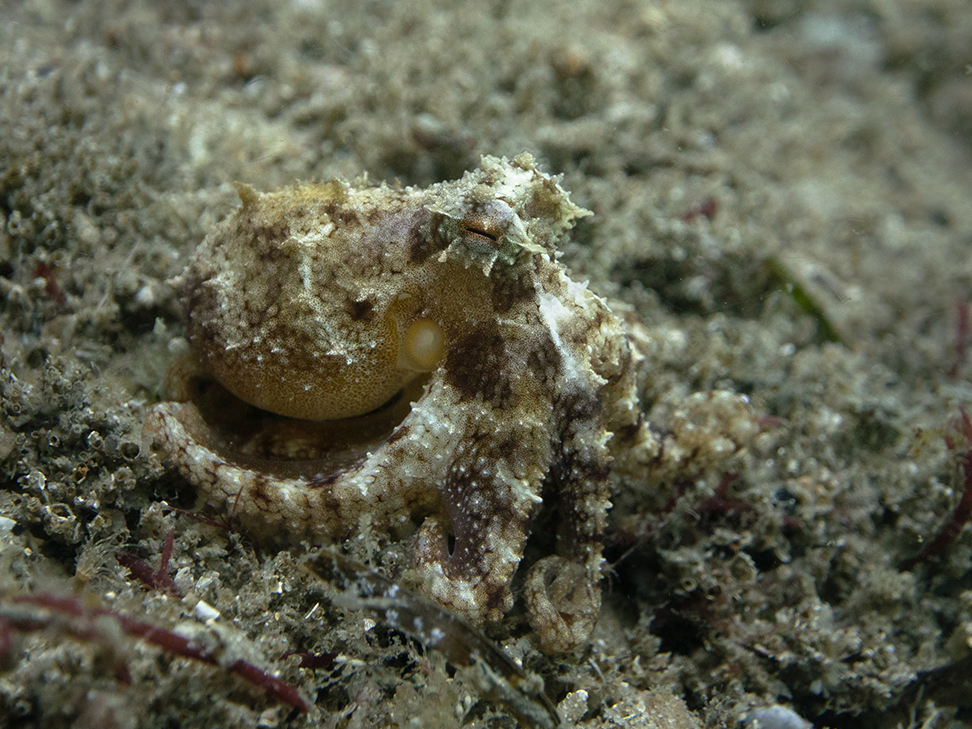 The diameter of the metal rod below is about 4 mm, for reference, and on the right is a lace byrozoan.
The diameter of the metal rod below is about 4 mm, for reference, and on the right is a lace byrozoan.
I am curious about the species. It might be a tiny one of the most common octopus at the site, Octopus tetricus (as in the top photo), but looks a bit like one that Dave Harasti, who has probably dived the site more than anyone, lists as “unknown octopus” on his old guide. Harasti also lists Amphioctopus cf kagoshimensis as a resident, and mine looks a bit like that species, also. Very hard to tell. It might be a small tetricus (the eyes look similar), and I should not trust gestalts and intuitions, but it did come across differently.
Here he (or she) is curled up under a soft coral.
Another couple of miscellaneous photos from Day 1. The first is a decorator crab in different attire.
And an octopus den by Le Corbusier…
The next post continues straight on…
____________________
* I started diving on the site in 2013. I think that Dave Harasti reckons this is already after the best years (I should check). It was pretty amazing back then, though.

